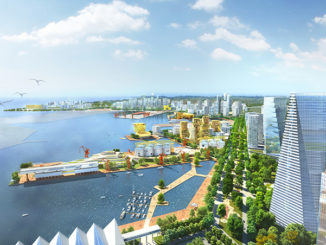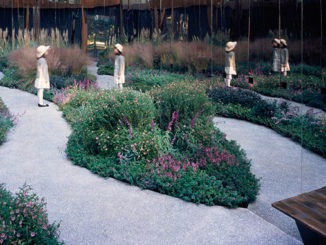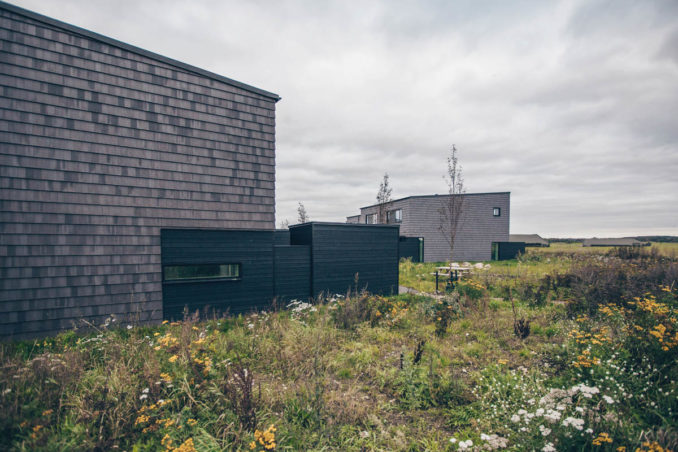
THE HYBRID LANDSCAPE
On the plains first shaped by the glaciers of the ice age and afterwards the use as a military airfield, Juul | Frost Architects have designed a project where the cultural, natural and urban landscape is merged into a hybrid landscape.
The project comprises 10 ha of landscape, including 3 open courtyards, a common area designed as a hill landscape, lakes, ditches and roads as well as 100 rowhouses. The first phase has just been realized and comprises 38 rowhouses embraced by a green and lush water sensitive landscape and 7 ha of common area. A landscape, that and accentuates the historical layers of the site, turns climate changes and challenges into potentials for recreation, leisure and learning and invites the dwellers into nature.
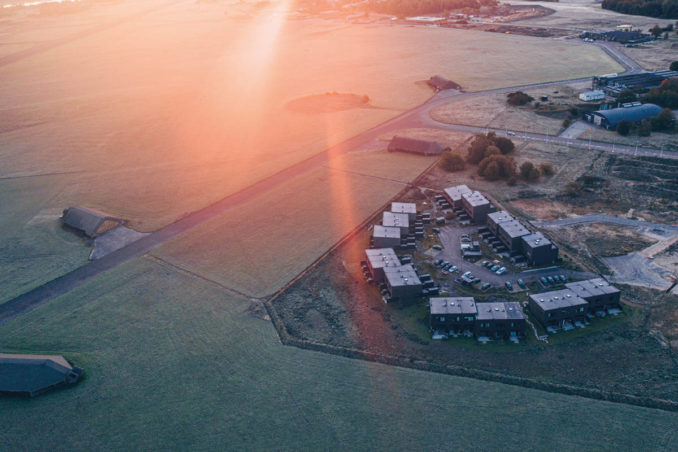
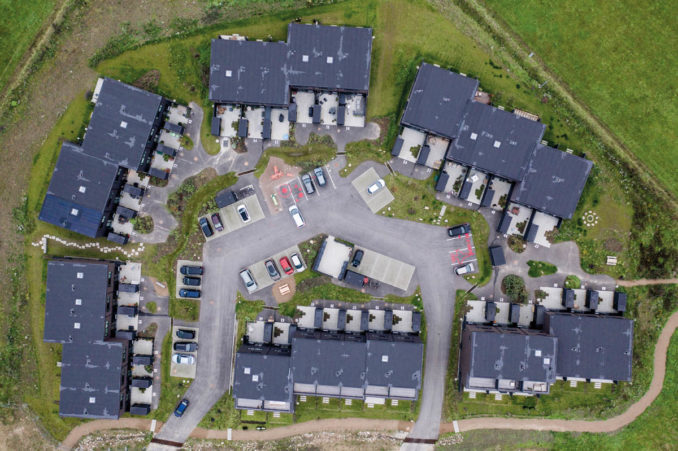
With its strong focus on access to nature and neighborliness, the project underscores the office ambition to promote social, physical and mental health and shape the future’s cities of well-being.
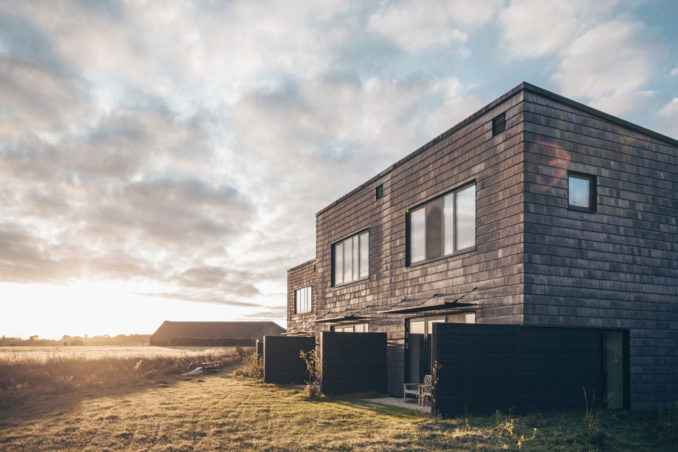
A TOUCH OF HISTORY, A SENSE OF BELONGING
The history and the spirit of the place is the pointer of the landscape concept: the landscape takes it starting point in the military airbase history, more specifically the camouflage pattern, which is transposed into a spatial principle for planting and movement.
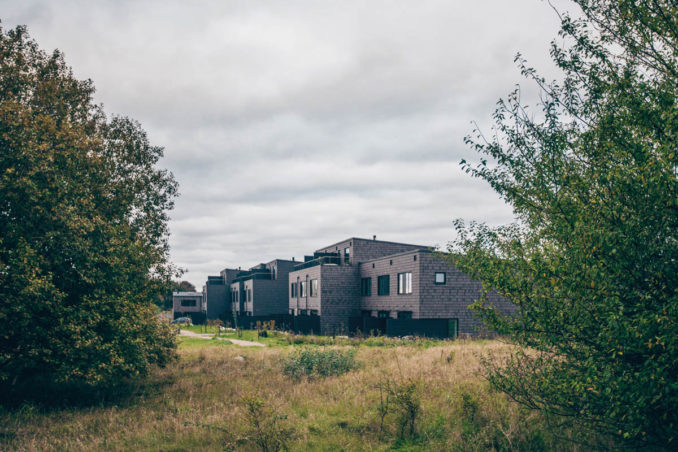
The camouflage layout produces different zones and spatialities between the buildings and arranged the zones in relation to different degrees of public and private. It secures a smooth transition between the privacy of the dwelling, the semi-private patios, the semi-public space of the courtyard and the public landscape of the airfield. Graduation promotes a feeling of security, and by extending the private space with patios, a strong sense of belonging.
The patios and edge zones generate life and interaction along with the buildings, it activates the outdoor areas, and it creates good opportunities for spontaneous meetings between the residents: The optimal condition for informal community life to thrive.
The feel of the history is highlighted by references to aviation; the house numbering is written into the asphalt in thermoplastic like at the airport aprons, and the jet fighter is parked in its booth. The history is brought down to the children’s level by an aviation-themed playground designed by the landscape architects specifically for this site.
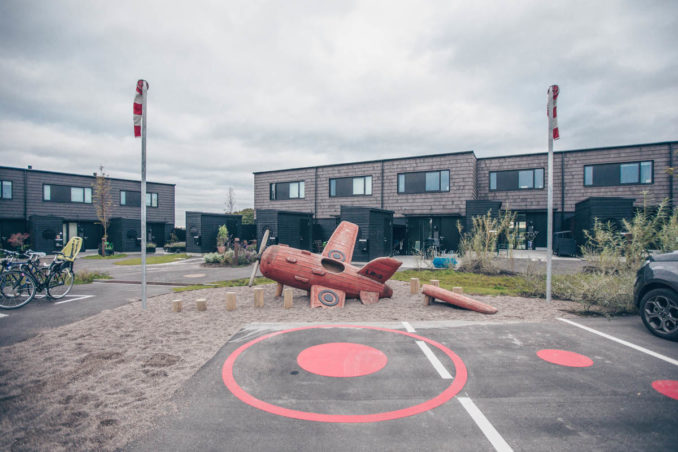
Openings to the courtyard do not only invite the public into the courtyard, they also open it towards the airfield, underpinning the continuance between the yard and the greater landscape. Through the great view to the airfield and the ice age landscape, the intimate landscape of the yard “borrows” from the greater one.
CLIMATE ADAPTION AS A CATALYST FOR CHANGE
Like in the ice ages, the ways of the water shape the landscape again. To evoke reflection, to help people comprehend the climate changes and to inspire to a more sustainable way of life the climate adaption is made visible and turned into new potentials.
In the courtyards the water harvesting secures a lush and green courtyard resilient towards the changing climate and cloudbursts, and an inviting common zone with views and contact to nature.
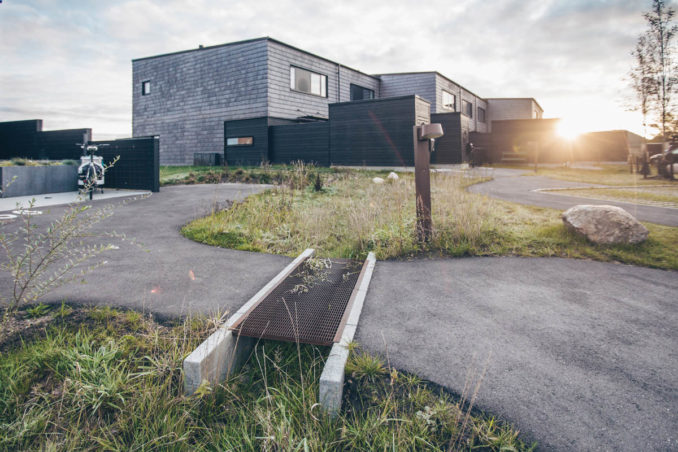
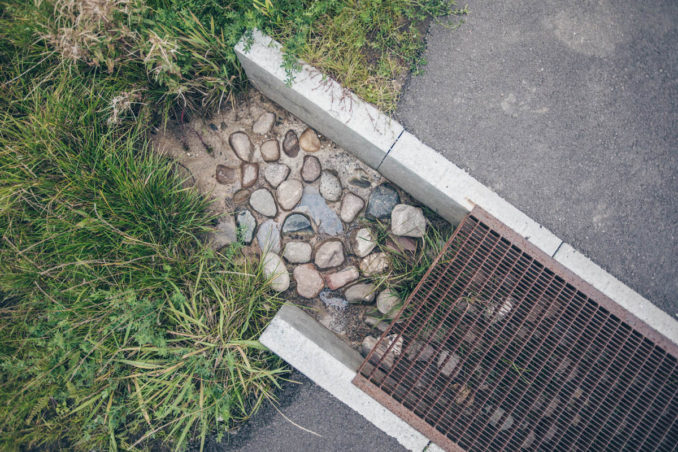
The water sensitive urban design integrates the water cycle, including storm water and groundwater management into the landscape, by drainage off all rain water from roofs, paths and surfaces through open channels. These channels lead the water to two newly designed lakes just outside the residential area where from it enters the natural water cycle: A new local destination to visit.
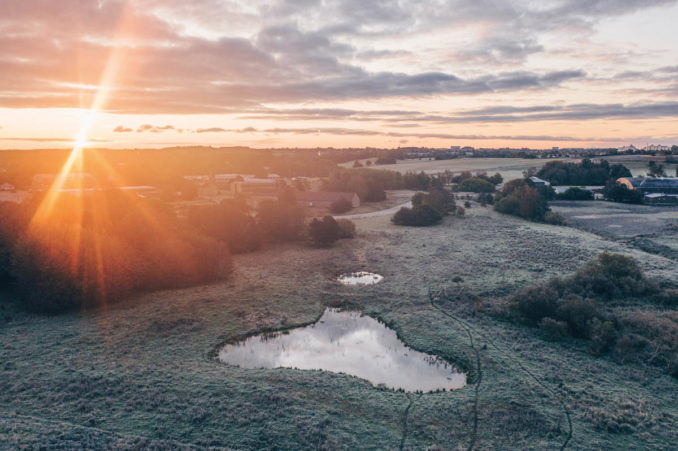
BIOIDENTITY CREATES BIODIVERSITY
While the housing units are designed as the same across the three clusters, each have a distinctive identity with regards to the plant schemes. Each cluster has its own bioidentity with reference to the surrounding landscape and local nature, respectively ‘the plain’, ‘the woods’ and ‘’the pasture’ that gives them unique atmospheres through the use of local species.
The local nature is drawn in between the buildings, thereby bringing the dwellers closer to nature.‘The plain’ is characterized by grasses, trees and herbaceous perennials in reddish tones, among others purple loosestrife and rowan, while the ‘the forest’ takes in the flora of the forest floor, and is planted, with among others, wild strawberry and wood anemone, European crab apple and bird Cherry. ‘The pasture’ identity is promoted by different grasses and yellowish herbaceous perennial like the tansy.
In total the residential area will become home for around 44 different species of local flora, thereby supplying the area with a rich biodiversity, and livelihood for insects and animals.
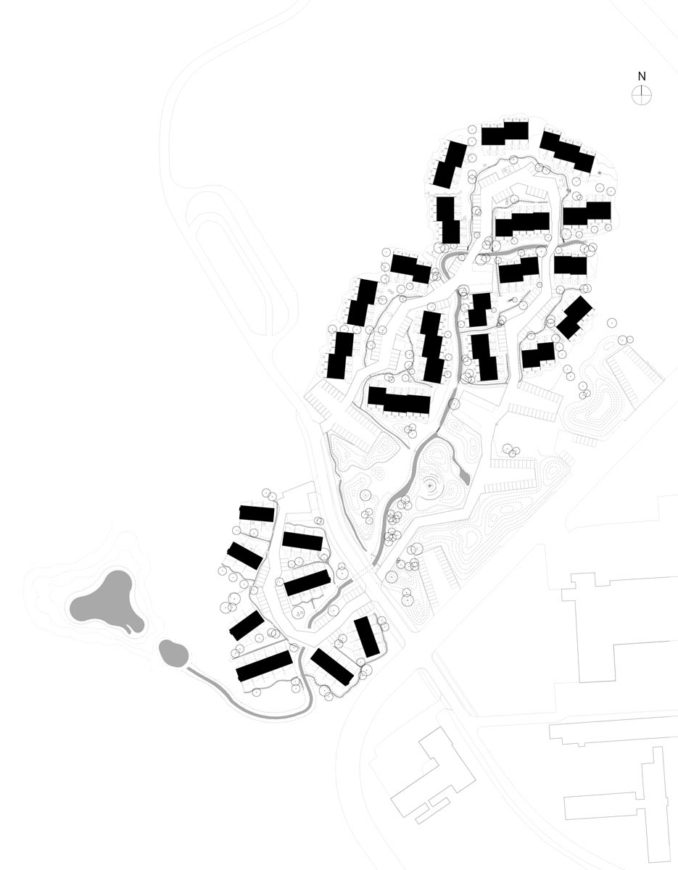
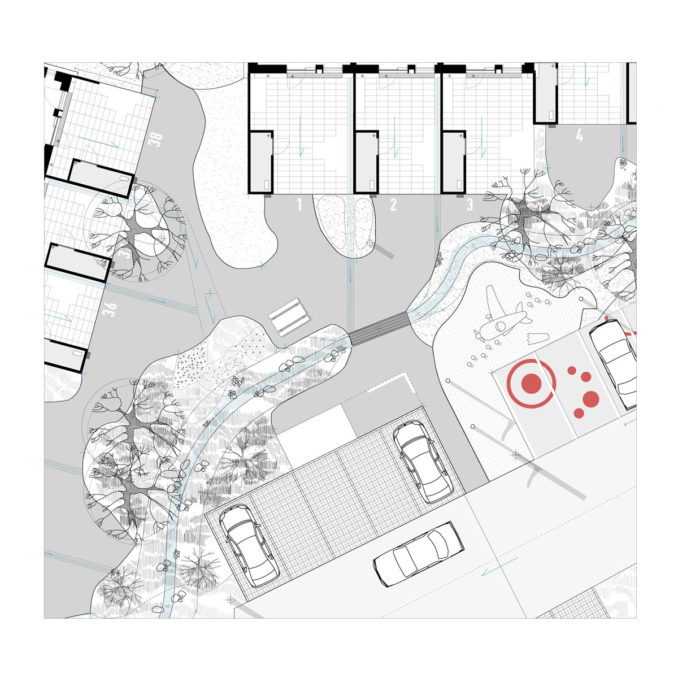
Flyvestation Værløse
Location: Faldskærmsvej, 3500 Værløse, Denmark
Designer: Juul Frost Architects
Landscape:10 ha / Housing 15000 sqm
Credits:
– Photos by Astrid Maria Busse Rasmussen
– Text by Mads Møller Angelsø


